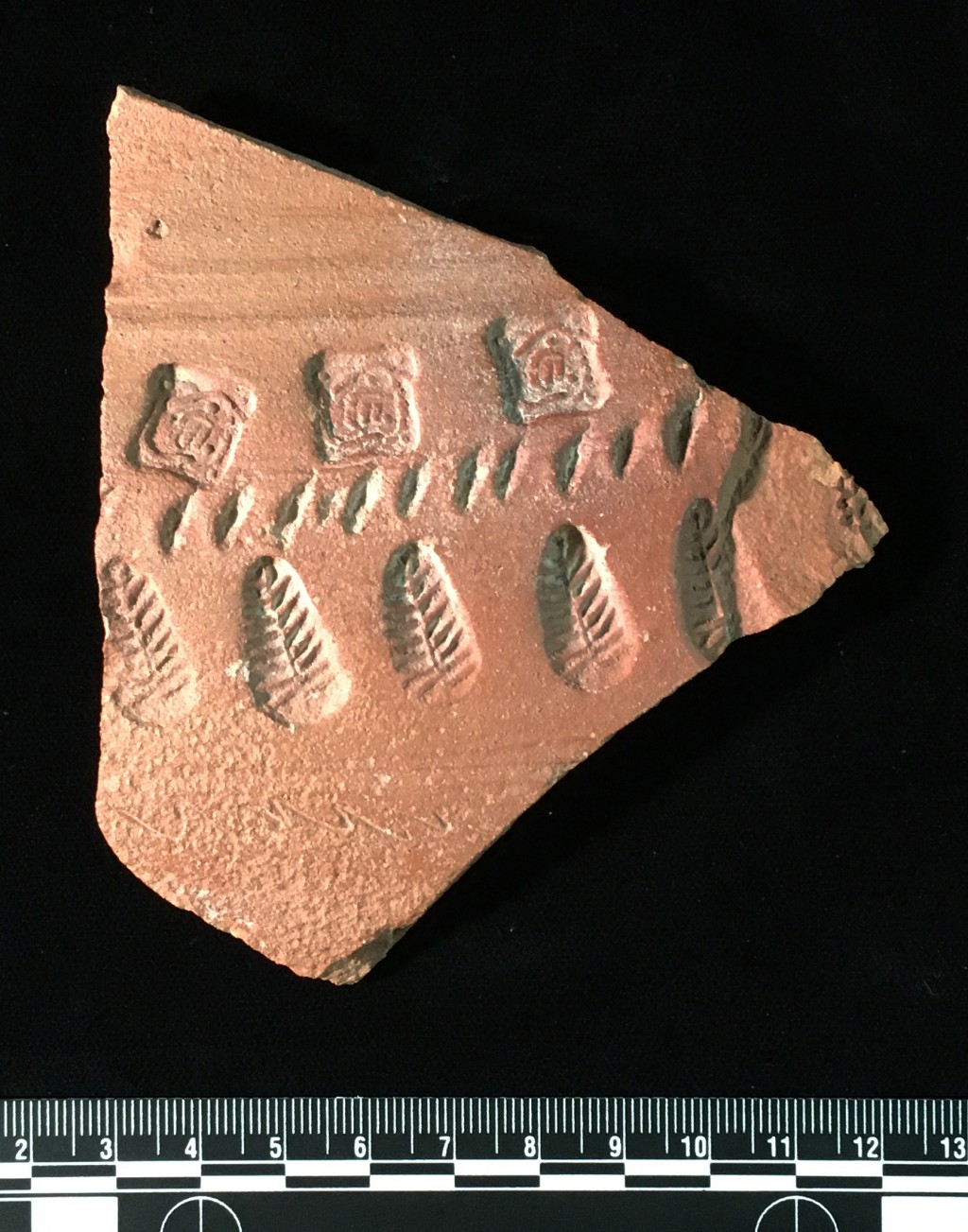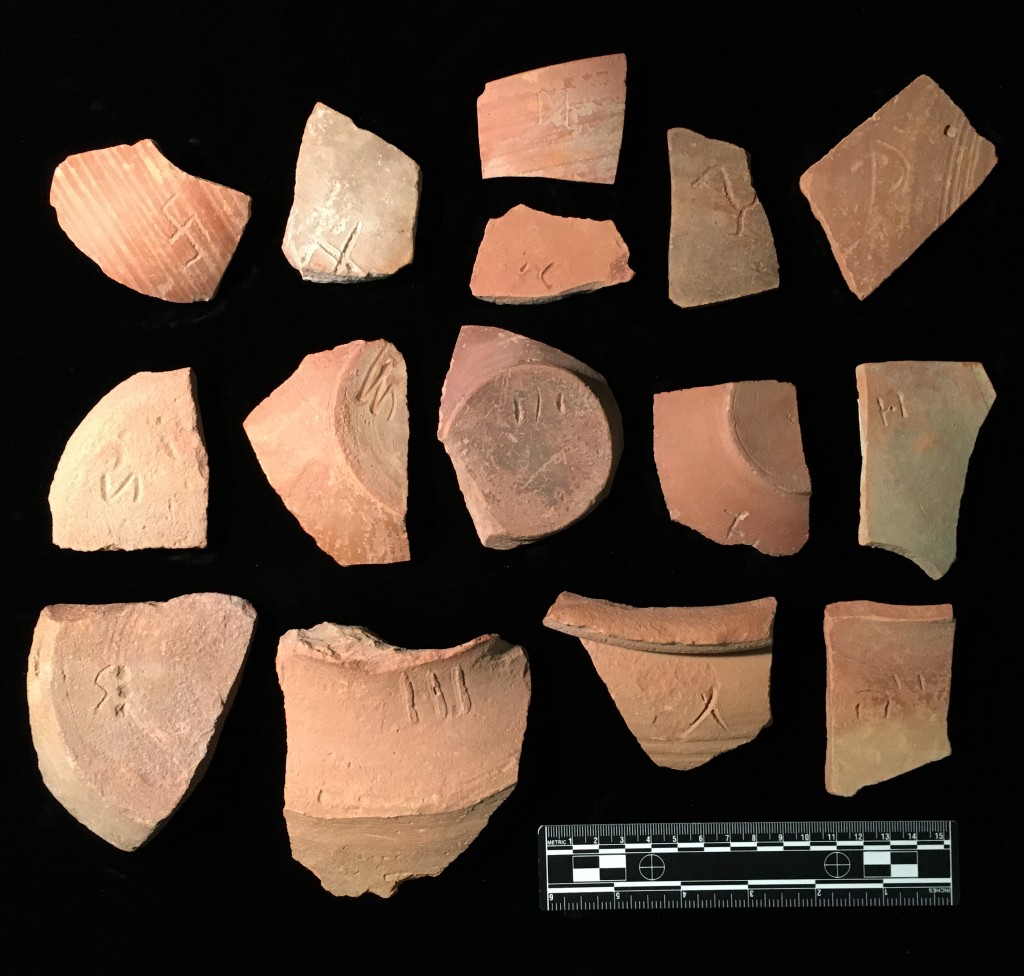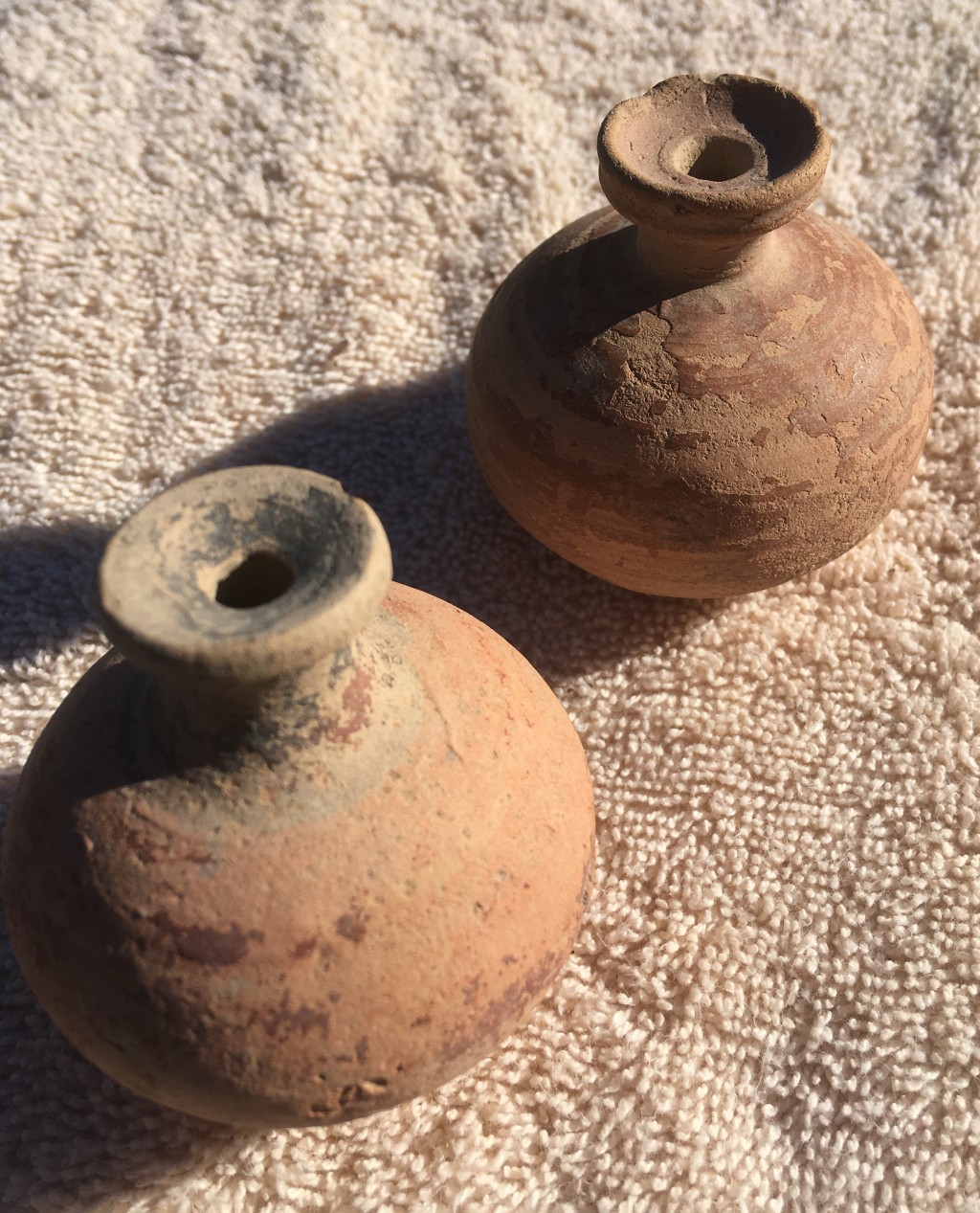Parthian
The Parthian period (200 BCE - 225 CE) represented the apogee of population in Afghan Sistan. Because of the length of time and density of population, our collection of ceramics from these periods is enormous. We have ceramic samples from over 100 surveyed sites from this period and found material at almost all of the 11 sites we excavated, including substantial collections from House 139, Temple 215, Sehyak, and Lat Qala. Recent surveys in Iranian Sistan have produced similar collections.
Several features of Sistan Parthian ceramics stand out. Large storage jars and some smaller forms are ribbed on the exterior. Sistan ribbed ware, first labeled by archaeologist Walter Fairservis, continues for numerous centuries after the Parthian period but is evident at every Parthian site. For finer ceramics, there are also several distinguishing features. They are almost always fired a deep red with a dark red slip on the exterior and burnished in a circular, or “ring,” pattern. These were found on shallow bowls and on stemmed goblets, a shape common in our Parthian ceramics. Ring burnished red slip decorations also extend before and after the Parthian period, but the volume of them at Parthian sites exceeds other points in times. This also made it easy to spot Parthian sites on the ground surface during our surveys.
Overlain on these features are several others. Many of the larger jars are further decorated either with incised patterns, usually horizontal lines or waves across the shoulder of a vessel, or a similar set of patterns using a combed tool. Less common were appliqued bands along the shoulder, sometimes decorated with punctated or slashed incisions.
The finer table ware show other decorative elements as well. The ring burnishing is occasionally varied with other burnished patterns, such as cross hatches, waves, or vertical stripes. Some red slip vessels also contained stamped decorations such as a leaf decoration, rosette, or simple circles.
At sites that seemed to have some cultic significance, such as Khwaja Kanur, Mukhtar, and Sehyak, we found still other features. Many sherds had incised tamga identifier marks on the shoulder or base. A form of bucket, or situla, often with highly decorated basket handles, was found at these sites but was almost absent elsewhere.
Cooking wares from Parthian sites were distinctive by the use of appliqued sun decorations on the exterior. Off the archaeological sites, and seemingly associated with burials, we found small, fragile but complete unguent juglets, sometimes painted. Storage jars embedded in the ground with ledge rims were another common form. These appeared in groups (2 - 30+ vessels), representing what we thought were small farmsteads that we labeled jar sites.













